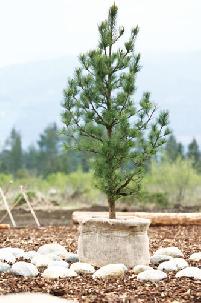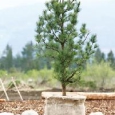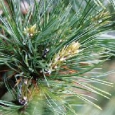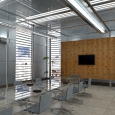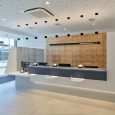Arolla pine straight from the Alpine pastures
An Alpine-feel knotted pine living room, a green tiled stove, gentle muzak and donuts deep-fried in lard this was once the epitome of comfortable living. But nowadays the Alpine wood is going it alone, and conquering modern interiors without the schmaltz. Vienna-based architect Andreas Mangl has paved the way for this amazing turnaround by reinterpreting the rustic Arolla pine with a more urban environment in mind. His translucent three-dimensional wave structured panels won first prize in the holzcluster-steiermark design-in-zirbe competition, well and truly setting the signal for the traditionally rustic high Alpine timber to make the move into today’s modern urban interior.
More fragrance less cardiac stress
Thanks to a special production technique, the light-coloured surface is actually three times the area of ordinary panelling. It also helps the Arolla pine’s curative fragrance to spread this pleasant resinous aroma contains up to 0.5% pinosylvin, an antibacterial and fungicidal substance present in the tree’s heartwood. Scientists at the Human Research Institut have found that in situations of physical and mental strain Arolla pine lowered the heart rate and sped up recovery.
Universal and high quality
Zirp wall panels have a surprisingly light and modern appearance. With the right back-lighting they can be used to create stimulating light effects and an aesthetically pleasing environment. Individual panels fitted in living rooms provide a decorative feature when used on whole walls or entire rooms, the panelling improves the atmosphere of the space. In a spa setting, the Arolla pine’s unique properties aid relaxation. In an office environment the panels can be used as visual barriers, and they make highly attractive room dividers when used in combination with glass. The wood’s special waved surface absorbs sound and improves acoustics.

